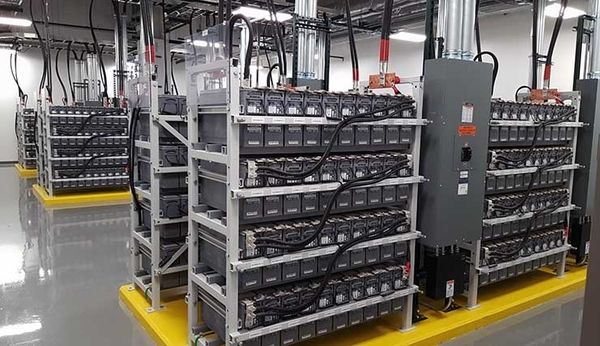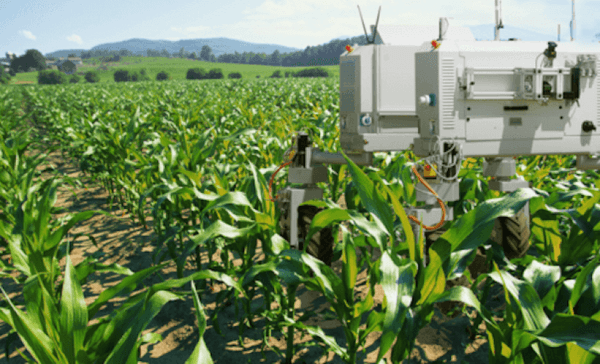
Should You Choose a Microsoft Windows or Linux Dedicated Server for Your Business?
February 13, 2019
Lead Acid Batteries vs Lithium Ion Batteries – What’s Best for Your Data Center?
February 19, 2019We will see pretty interesting reflections of IoT across industries in 2019. These industries will continue to be affected by the acceptance, growth, and maturation of IoT software and hardware implementations. IoT is turning schools safer, cars intelligent, and homes smarter with the great automation at minimum costs, as well as creating its use wherever it’s possible. But few people have not yet seriously thought about applying a technology like IoT to agriculture.
IoT technology is reviving the agriculture sector around the world. With the use of IoT and AI-based solutions, farmers can take care of their crops and livestock with desired reliability and efficiency. IoT and other advanced technologies help farmers automate farming equipment and tracking & monitoring livestock in real time with the precision never seen before. IoT and AI-enabled farming solutions allow farmers to generate more production out of the same resources and keep on feeding the increasingly hungry world.
Farming Machine and Equipment Automation
Modern farmers use equipment and heavy machinery to perform a variety of farming operations. No doubt they need to have people to get things done. On the other hand, the farming sector is continually struggling with a shortage of skilled workers. The lack of people’s interest in performing agriculture as their full-time profession leaves farmers to bear losses.
But IoT can help them in this situation. Tractors, cultivators, plows, and other farming machinery can meet the automation with the need for minimum or almost no human-dependency.
While self-driving vehicles are still in the concept and their full-fledged implementation is still many years away, their restricted and controlled use in the sector is possible today itself.
Without any doubt, agriculture & farming appears to be the first adopters of autonomous vehicles for all good reasons. Farmlands are the best place for the free use the autonomous vehicle technology in a restricted/controlled environment. Farms are open places with no pesky pedestrians.

And because there is no human intervention or risk associated, automated farming machinery will operate with higher intelligence, at maximum efficiency.
Livestock Monitoring
Commercial farming isn’t limited to harvesting crops only. Many farmers are now professionally engaged in managing hundreds or thousands of farm animals, otherwise known as livestock. For these farmers, their commodity is living, breathing, moving and, their monitoring, in all senses, is way more critical than crops.
But IoT-based livestock management solutions can make livestock monitoring more accessible than ever before. Livestock monitoring solutions are based on sensors connected with livestock wearables. These sensors can monitor the heart rate, blood pressure, temperature, breathing rate, and even digestion and send the data to a central computer for further analysis. With these sensors, farmers can also keep tabs on locations of an individual farm animal and even spot sick ones by tracking their optimal grazing patterns. They can help farmers to rapidly react to an infected animal and stop its disease transferring to other animals in the herd.

IoT Connected Beehives
IoT technology can also help beekeepers remotely manage their hives and collect data to assess bees’ health. IoT sensors can be applied to schedule events and execute tasks to take better care of colonies of bees. IoT hardware for beehives, like a temperature-regulating cork and hive gate, can even count bees as they come and go. And all of this can be captured with a hive monitor setting amongst hives and transmitting data to the software in the cloud. IoT solutions not only increase bees’ survival but also avoid chances of hive theft.

Precision Farming
Today, precision sensors help farmers collect data related to weather, soil, air quality, and crop maturity. This data then leads them to make smarter decisions. Sensors can also help farmers better understand water usage across their croplands. They can automate watering to crops or pants. IoT sensors can even inform farmer about the amount of fertilizer and pesticide to be used.
IoT sensors can be applied to monitor greenhouse facilities. They check and record greenhouse temperature that allows growers to keep tabs on data and sensors’ maps, and get notified about the temperature or humidity hitting the specific threshold level.
With precision farming, farmers can operate more efficiently as they have more profound insights and better control.
Wrapping Up
The current form of IoT, related hardware, and IoT application development have got everything that farmers need to produce more, with minimum crop damage as well as controlling machine and equipment remotely, without having too much dependency on humans.
Also, it’s easy to adopt these sensors and IoT technology. Small and medium level farmers can get outstanding results with readily available hardware and software. For commercial level farming, custom IoT app development and equipment can be implemented.


2 Comments
Hello SOFIA COPPOL! I hope you are doing well in this crucial time of the Covid19 outbreak. Yes you are correct the Internet has changed the ways of farming and year by year it’ll progress more. also AI and IOT together can change the world.
IoT in an agrarian environment refers to the use of detectors, cameras, and other bias to turn action involved in farming into data,It has covered everything related to Internet of things IoT.